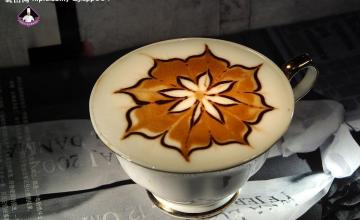Flavor description of Hasunda Coffee Garden in Ecuador the characteristics of grindness varieties and prices in producing areas
Port Guayaquil is the largest seaport in Ecuador. It faces the Pacific Ocean and backs against Mount Santa Ana. The nearby island of Pune serves as a natural barrier to protect the harbour from storms. There is a wharf in the south, which is more than 900 meters long. Ships from different parts of the world flying various flags are moored in the harbor. The port railway leads to the capital Quito, and highways connect Quito with other cities in the country. Bananas, cocoa, coffee, cotton and other products from all over the country are collected and distributed here. Guayaquil has also played an important role in the history of friendly exchanges between the peoples of China and Ecuador. As early as the 18th century, Chinese clothing, textiles and other goods were shipped to Ecuadorian cities through Guayaquil. In August 1978, the Chinese cargo ship Jialing River arrived here for the first time. Most of the import and export goods of the two countries are the Ecuadorian national emblem transshipped through Guayaquil. Ecuador's national emblem was launched in 1900, similar to the national emblem of Colombia. A ferocious "American Condor" vulture stands above the national emblem. It is the national bird of Ecuador, symbolizing sovereignty and independence. The design of Ecuador's national emblem is unique, which fully shows the amorous feelings of the country: the snow-capped Mount Chimborazo, Ecuador's highest peak, stands towering on the banks of the Pacific Ocean against the blue sky, with verdant trees at the foot of the mountain. a large river winds out from the depths of the mountains and gradually merges into the blue sea. The earliest steam ocean-going ship in South America, which Ecuadorians are proud of, is moored at the mouth of the sea. Above the snow peak
Mr. Veniso, champion of the 2014 Ecuadorian Coffee Competition, told reporters that some of the Ecuadorian coffee is espresso made from Ecuadorian alpine coffee beans. This coffee comes from a mountain area about 1000 to 2000 meters above sea level and has a mellow taste with aromas and sweetness of fruit, grass and chocolate. Some add mint grass from the Amazon to this espresso. Some add Ecuadorian rose petals called "Rolls-Royce in roses" to espresso for amazing taste.
Ecuador is the highest Arabian coffee plantation in the world. The Arabian Coffee Tree was first introduced to Ecuador in 1952 and its coffee is of good quality, especially the coffee harvested in early June. Ecuadorian coffee beans can be divided into two varieties: Galapagos and Gigante, both of which have the characteristics of large particles, heavy weight, balanced acidity and rich aroma. Ecuadorian coffee can be divided into first class (No.1) and super excellent (ExtraSuperior) according to its quality. They are mainly exported to the Nordic countries of Scandinavia. Can be made into high-quality mixed coffee, suitable for a variety of uses
As one of the best Arabica coffee producers in the world, Ecuador's unique ecosystem advantages make its coffee from different coffee producing areas have a unique taste. That's why every mouthful of coffee made from Ecuadorian beans, whether it's single coffee or blended coffee, is endless and tasteless. In order to let more Chinese consumers know more about Ecuadorian boutique coffee, the Ecuadorian Export and Investment Promotion Agency (Pro Ecuador) and the welcoming Research Institute (InkaLab Coffee) jointly held an event on the cultural experience of Ecuadorian boutique coffee in Shanghai on the 11th of this month. The purpose of this event is to raise Chinese consumers' awareness of Ecuadorian coffee and related food culture, so as to play a positive role in promoting the future sales of Ecuadorian coffee in the Chinese market.

Important Notice :
前街咖啡 FrontStreet Coffee has moved to new addredd:
FrontStreet Coffee Address: 315,Donghua East Road,GuangZhou
Tel:020 38364473
- Prev

Caramel Fragrance Ecuadorian Santa Cruz Manor Coffee Flavor Description Grind Degree Variety Features Region Introduction
Ecuador is at the center of the world, which is why Ecuador is known as the equatorial country, and Ecuador's top coffee is also known for its superior geographical location. Two hours east of Quito, Ecuador's capital, you can drive to tropical jungle areas and west to the sea. Ecuador is one of the most diverse countries in the world. In any direction you are
- Next

Special sweet Panamanian jadeite manor coffee grinding degree taste characteristics variety flavor treatment method
Growing environment Panama is a small country located in the center of the American continent. The waters of the Atlantic and Pacific oceans flood its beaches. Panama is located at 9 degrees north latitude, the meeting point of the Central Mountains, where Mount Baru, one of the highest volcanoes in Central America, is located. The Baru volcano has an altitude of more than 11400 feet, and the land around it is rich in nutritious and fertile soil.
Related
- Does Rose Summer choose Blue, Green or Red? Detailed explanation of Rose Summer Coffee plots and Classification in Panamanian Jade Manor
- What is the difference between the origin, producing area, processing plant, cooperative and manor of coffee beans?
- How fine does the espresso powder fit? how to grind the espresso?
- Sca coffee roasting degree color card coffee roasting degree 8 roasting color values what do you mean?
- The practice of lattes: how to make lattes at home
- Introduction to Indonesian Fine Coffee beans-- Java Coffee producing area of Indonesian Arabica Coffee
- How much will the flavor of light and medium roasted rose summer be expressed? What baking level is rose summer suitable for?
- Introduction to the characteristics of washing, sun-drying or wet-planing coffee commonly used in Mantenin, Indonesia
- Price characteristics of Arabica Coffee Bean Starbucks introduction to Manning Coffee Bean Taste producing area Variety Manor
- What is the authentic Yega flavor? What are the flavor characteristics of the really excellent Yejasuffi coffee beans?

